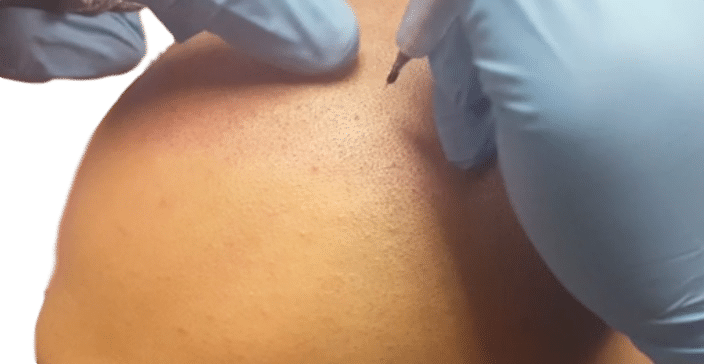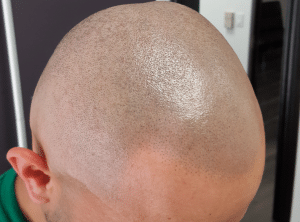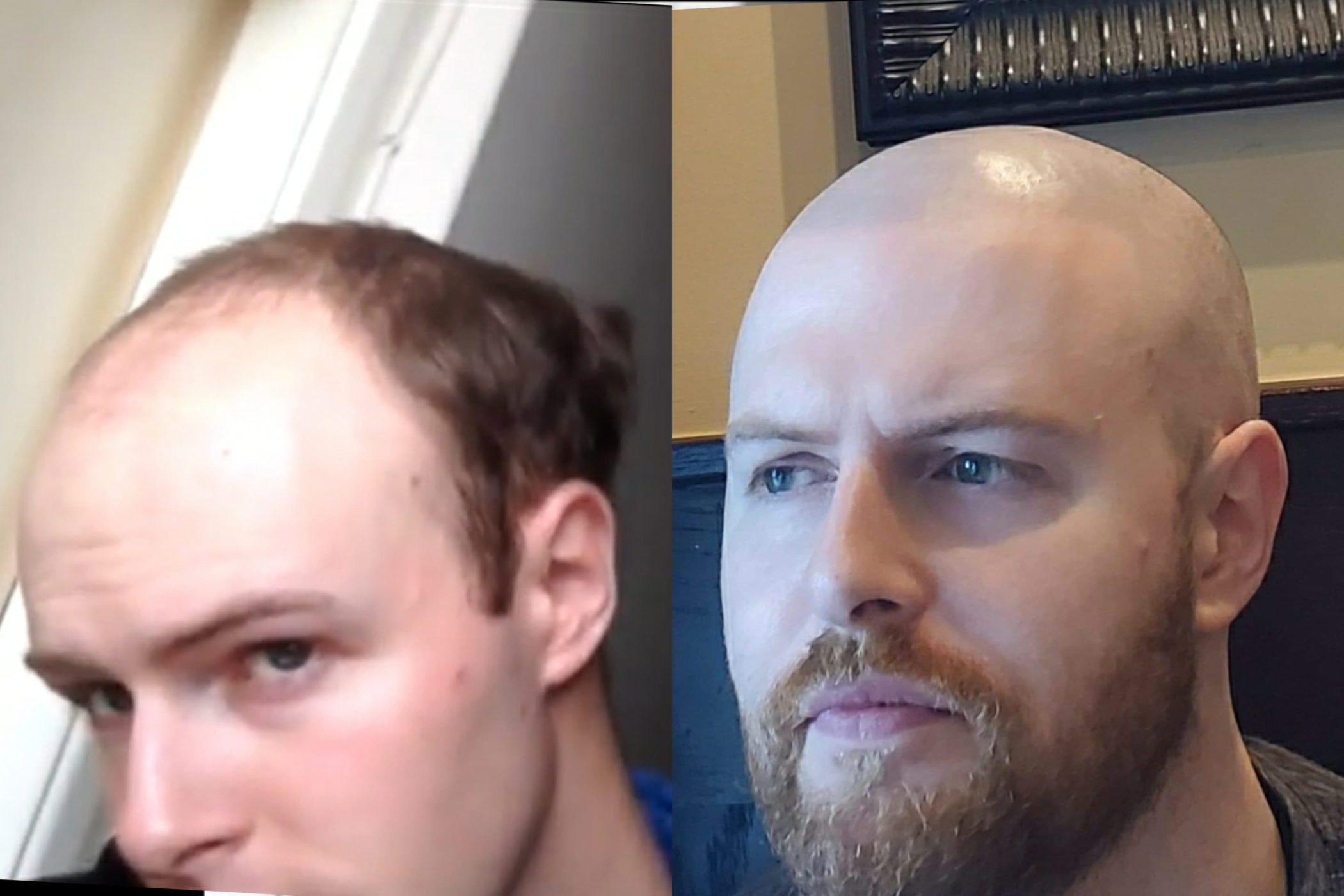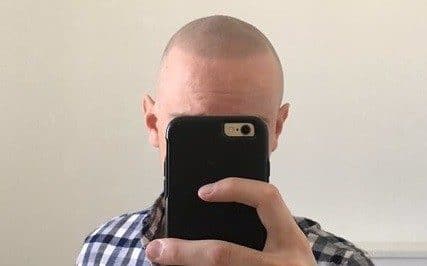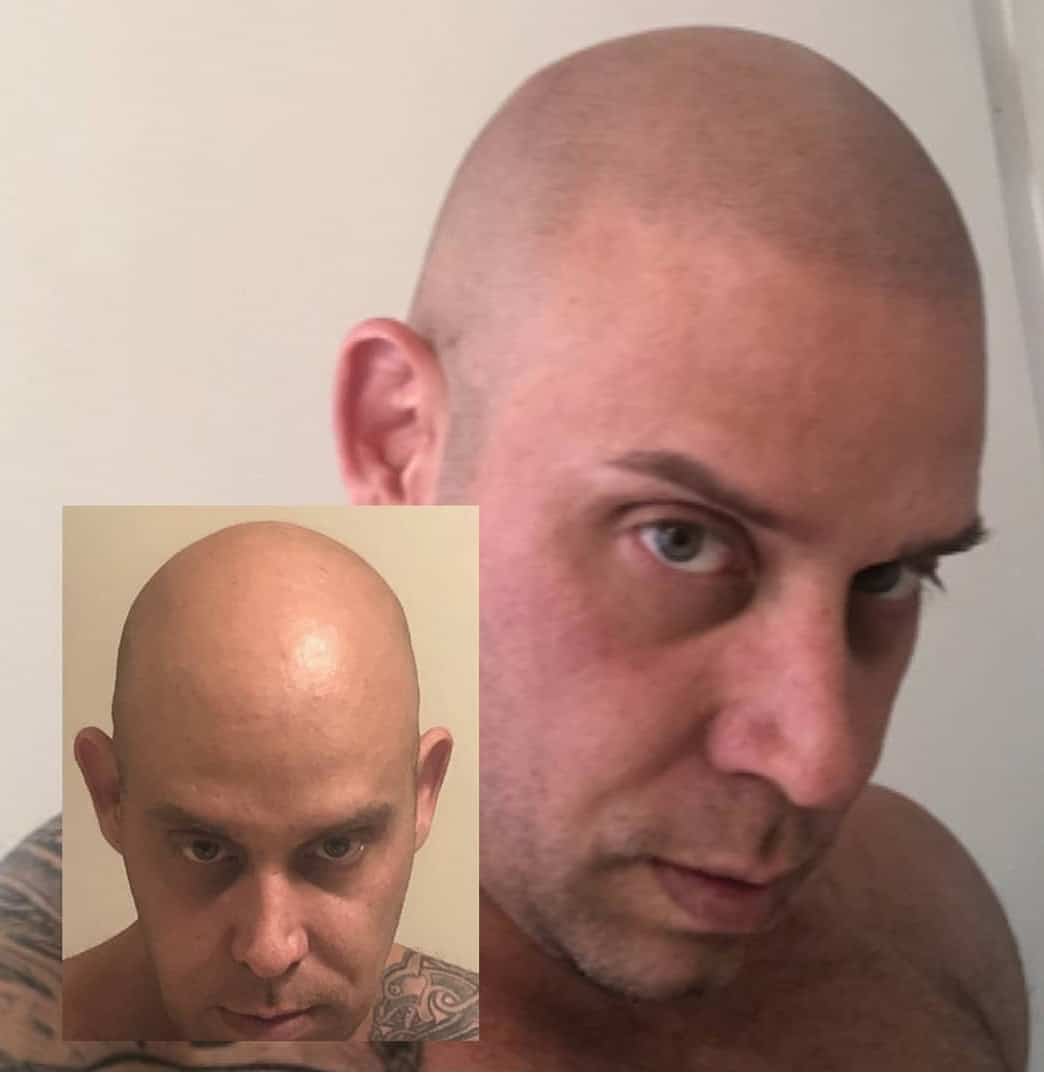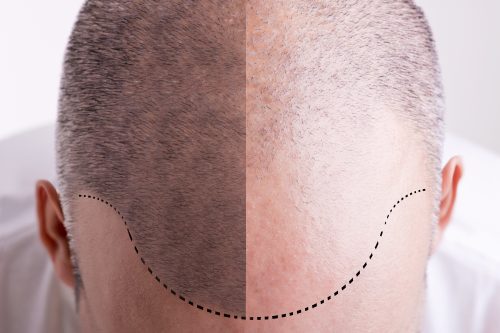As many of you know, I am from the UK – the birthplace of modern-day Scalp Pigmentation or the hair tattoo. There are a lot of clinics there, offering SMP to a very high standard. Texas was different and partly why I came here – despite having Dallas, Houston, San Antonio and Austin in one state – the number of good clinics and good technicians was and still is, limited. As a result, I’d like to share with you a handful of the best tips and advice I can give to new technicians and hope that it helps you along the way, because like most things worth doing… this isn’t easy!…
See more about our Scalp Micropigmentation clinic in Houston here: https://www.scalpp.com/scalp-micropigmentation-houston-texas/
Now, where to start? Firstly – just accept – when doing treatments, you are going to make mistakes. Your treatments today are going to be a shadow of your procedures in 12 months time. So you should do your first treatments on the side of extra caution, and make sure the only mistakes you make are fixable ones. I will go into detail on this later.
Being a new technician today, in some ways is simpler – the equipment, inks, and techniques are no longer “top secret,” and the machines we use now are also much better than the ones I started on. The needles hold more ink which means more work can be completed, and there are now excellent resources such as Scalp Guru’s facebook group where you can compare your work to others. However, the standard of SMP is also much higher and this puts a lot of pressure on any technician to achieve similar results. This pressure can be frustrating too as a Technician’s confidence is such an important factor in the learning process. I was shaking scared the first time I did anything with SMP – just drawing on a hairline, mixing the ink, talking to new clients, it all scared me because it meant so much to me. But this fear only aided in slowing down my learning. I was nervous with every client I treated or whenever some “new” challenge came in – first scar coverage, first alopecia client, first female client – scary. I never thought I was going to get over that hurdle. I am my own worst critic, and I always want to be aiming for the best.
Treating clients in Miami, Florida – 2015/2016
Many years later, I have gotten past all of the lessons, all the mistakes, and used this to train others through my training courses As a result, here are the best tips that I can give to new trainees:
- PRACTICE AND EVERY CLIENT IS UNIQUE
We are dealing with human skin. There are an incredible amount of variables that you can only learn through experience. I can say with all certainty – the number one mistake that new technicians make is to treat every client the same. Not only is every client different but a client’s scalp itself will show variations depending on what part of the head we are treating. It is the most unpredictable area of skin on the body and adding to this – it is also the area of the body most affected by changes in weather. The skin is almost never consistent throughout any scalp – usually, it will be loose at the back, typically tight on the hairline, somewhere in the between in the middle of the head. But again, this can be in complete reverse. Then we have ethnicity of the client, skin tone of the client and hair color of the client. As a result of all of this, you need to adjust your approach and technique accordingly. Some skin is going to hold the pigment 100% after session 1; some skin is going to make it disappear if you don’t deposit the ink in the right way for that particular skin and use the right ink shade. Some clients skin will need larger dots, others tiny dots, some skin areas will require the pigments to deposit at a slightly different angle, some skin requires the needle to be in the scalp for that extra millisecond – others the deposits need to be placed very quickly. Some clients will go so red that you can barely see what you are doing, some will bleed, some will need a lot of breaks and others will fall asleep during treatment. Adding to this, we also have the client themselves and their personalities.
Some clients are unreasonable. I remember the tech that initially trained me – he said my patience would be my most valuable skill in the future. And he was very right (especially in New York!) The only way to improve is to treat clients, one thing you will have on your side in the early days is that you will be less busy, but therefore you will have more time to finish. Make each client count. Offer services to friends, family, and models for cheap for both practices and pictures for your portfolio and website/social media. Think of these treatments as an investment; you get good at it so you’ll be able to charge more in the future. The sooner you learn how to work with a variety of skin, hairlines choices and client personalities, the shorter your learning curve will be.
- BE A PERFECTIONIST
After this, you will be looking at improving and trying to get treatments as perfect as you can. Put yourself in the client’s shoes. How you are with them, how your office looks, it all makes a difference. But above it all – the treatment result is number one. Put that extra effort into each treatment. Even if you have performed 5000 procedures, for that client – it is their one and only treatment that they have often saved up for months (even years) to afford. This is their time. No matter how good you are or how fast you get, a beautiful treatment is going to take hours and can vary depending on the size of the area, hairline choice, how much blending is needed, side profiles, etc. But even if a treatment has been exhausting, that’s all the more reason to put in that extra effort. You just spent 4 hours placing dots on someone’s head? Then make sure those 4 hours were worth it by spending an extra hour on the more delicate details and create a treatment you are proud of and the client loves. Be obsessive, each treatment out there is your masterpiece – a visual representation of your skill, your empathy, and your commitment.
Example of seamless blending + broken hairline, Ian Dennis, Austin, 2015
- TEACH, DON’T PITCH
We all have different ways of doing consultations. I was always taught to hard sell. But for me as a person, I hate to be “sold” to, I find it patronizing, so I don’t do that with others. It’s up to you how you do this, but for me – I treat a consultation like I am informing them about SMP rather than trying to sell it. This is a great treatment when done properly – it sells itself. I ask them what their goals are, how much research they’ve done, see how much they know already and tell them, honestly, what I can do for them and if they are a good candidate. If somebody books, great, if they don’t, great. The ideal consultation is about listening to what the client wants and explaining your approach to solving their problems, including them in the design process, and letting them know what to expect every step of the way. This way, they feel secure, confident in your skills, and know that you are the expert. You always want to let your client feel that they have control and that you, the artist, are guiding them. If they ask an odd question (“Do the dots grow?”) Do not patronize them or laugh at them, go further into detail about the process and make sure they fully understand how this works. Positive and honesty.
- LEARN, THEN LEARN, THEN LEARN
It is essential in your early treatments to go lighter with color choice, lighter with pressure when depositing the ink and lighter with density and keep the hairline higher up to start with, just be careful and don’t box yourself into a treatment where you can’t make changes. It may take an extra session or 2 to finish early treatments – but this is fine. More practice!
The SMP community is pretty good, there a few morons that stand out. But on the whole – excellent and supportive people that care about their clients. The grass root should be excellent scalp pigmentation training with a supportive teacher and the subsequent follow-up. Avoid the over the top bigger classes. Groups of 6 at most with 2 trainers would be my advice. I used to offer group training but now I only usually do one on one scalp pigmentation training. I work alone therefore can spend every hour of practice with that one person, as a result – I have definetely noticed a much quicker learning curve on my trainees these days. So yes, don’t try and skip this learning curve to make it go quicker – I can 100% assure you that it will cost you and your clients much more time and $$$ in the long run as well as not being good for your own confidence.
Don’t be scared to follow-up, most of the good trainers will be okay with you sending them your client photos and ask for feedback after training. Never be afraid to ask a trainer for a call before choosing his/her class. If the relationship is off to a bad start, it’s good to find out sooner than later. My training was six months initially, and you don’t have that long. Most courses are one week at most, so it’s vitally important that you get the trainer right. After training, you won’t leave an expert – but you should have the fundamentals and a good base to develop from – the rest is down to you. I hear lots of Technicians claiming to be a “natural” at SMP and that you need to have an artistic side to you to do this. Not true. They may help, but I can assure you – the best Technicians have one thing in common and it’s not that they are all natural artists: they ALL worked very very hard to be as good as they are. So it’s up to you in many ways, how good do you want to be??
- TRY BE A CUSTOMER
If possible be one. If you have got a lot of hair, there’s no harm in letting another technician do a few dots on the crown. Then you can get a feeling for being in that chair, the nerves, the sensation, see the healing process day by day and results. Having the treatment done certainly helps in a consultation scenario as I was once in their shoes. But many of the world’s best technicians have also never had any Scalp Micropigmentation treatment too. It also goes without saying – make sure you get proper treatment for yourself. It doesn’t matter that you didn’t do your own procedure, clients just want to see SMP in real life. Photos can only show so much and in the day and age of Photoshop and filters – clients can rightly be suspicious of pictures they see online.
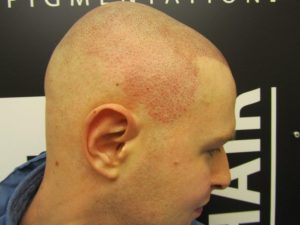
Me during my treatment at HIS Hair Clinic in Birmingham
- TAKE PHOTOS OF YOUR WORK – LOTS AND LOTS
Take them from every angle – front, back, sides, close up and zoomed out with a good camera in good lighting with minimal light reflections if possible. Even now, after every session I treat – I analyze the before and after photos – I zoom in and plan the next session out from there. Quite obsessive but I know this approach has worked for me. You can also join one of the many Facebook groups for SMP. Look at the work others are posting on there but don’t be too self-critical if your work doesn’t match up to other’s work initially. The idea is to learn from them, not compete with them, although that can work too! And don’t be scared to message a few Techs whos work that you like and ask for feedback. I would avoid posting your treatments publicly when you are starting out, especially after a first session and especially if the client has gone very red. It’s never going to look perfect after one session no matter who you are. Unfortunately, you can end up with some negative feedback from the uninformed troll, and that isn’t going to be great for your confidence moving forward.
“Happiness lies in the joy of achievement and the thrill of the creative effort.” – Franklin D. Roosevelt
So, that’s that, well done if you made it this far. I hope this helped anybody out there new to this or considering training. Scalp Micropigmentation is a fantastic treatment and a great skill to possess, and to be able to use this skill to change lives is the most fulfilling part of it all. Did you notice I never spoke about the financial side of this? Get good at your treatments first, then get better than that. The $$$ will come naturally, good treatments sell themselves with sufficient marketing and excellent treatments to back up your words.
I hope this serves as a reminder that we all started somewhere, I highly doubt that there is a single good Technician out there that hasn’t questioned their ability at some point early or even later in their careers. Eventually, you will get to the stage where you are confident that every client that enters your clinic is going to leave with an impressive treatment. So – keep learning, keep improving. Soon the days of defeat and the days of “that client” who has abilities to push and push your emotional valves? These will be dwarfed by the tens, then hundreds, then maybe thousands of Men, Women, and Children whose lives you have changed through the great skill of being able to make dots of ink look like hair!
Thank you for reading. Feel free to again see my own course details at: www.scalpp.com/scalp-micropigmentation-training
Ian Dennis, March 2018,

